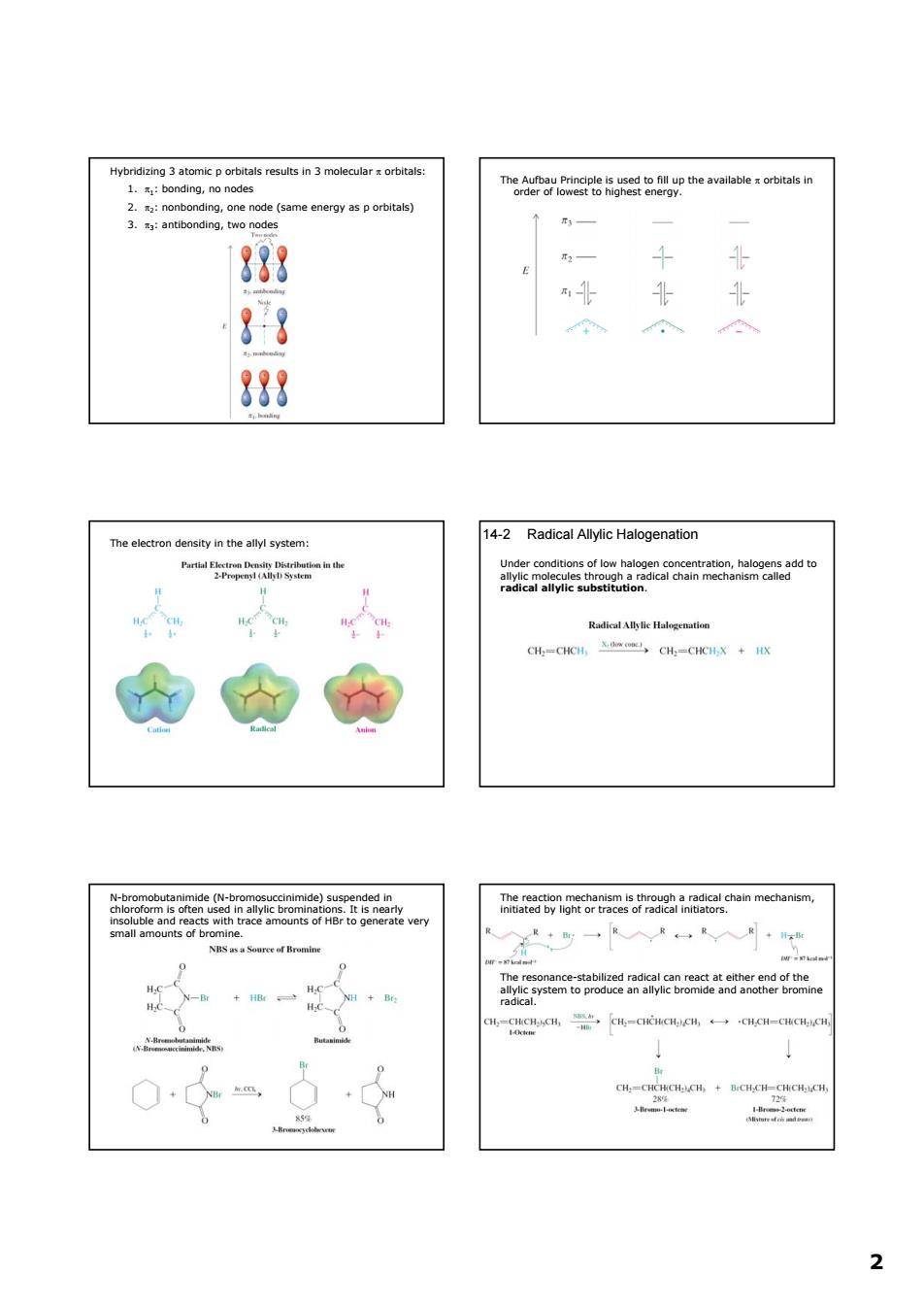正在加载图片...

me6治 一 888 。非非 8日 888 The electron density in the allyl system: 14-2 Radical Allylic Halogenation NH Br nopaoog tC-CCG-GG 22 Hybridizing 3 atomic p orbitals results in 3 molecular π orbitals: 1. π1: bonding, no nodes 2. π2: nonbonding, one node (same energy as p orbitals) 3. π3: antibonding, two nodes The Aufbau Principle is used to fill up the available π orbitals in order of lowest to highest energy. The electron density in the allyl system: 14-2 Radical Allylic Halogenation Under conditions of low halogen concentration, halogens add to allylic molecules through a radical chain mechanism called radical allylic substitution. N-bromobutanimide (N-bromosuccinimide) suspended in chloroform is often used in allylic brominations. It is nearly insoluble and reacts with trace amounts of HBr to generate very small amounts of bromine. The reaction mechanism is through a radical chain mechanism, initiated by light or traces of radical initiators. The resonance-stabilized radical can react at either end of the allylic system to produce an allylic bromide and another bromine radical